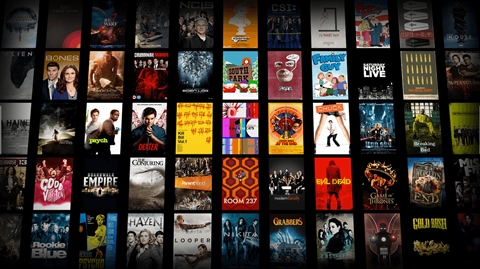The world’s most pirated TV series, Game of Thrones, is back. As viewers prepare to watch season 7 of the fantasy series, we ask what can be done to stop the wider illegal distribution of content?
Unless you’ve been living under a rock (or perhaps in Bloodraven’s cave) for the past few weeks you’ll have noticed that Game of Thrones returns this weekend with the premiere of season seven.
As winter grips Westeros and the White Walkers descend upon the Wall, viewers will hope that the questions posed in the previous six series will be resolved.

To find out, in the UK, Ireland, Germany, Italy or Austria viewers will need a subscription to Sky.
In the US, a subscription to HBO is required.
Fans of the show that don’t have a subscription to these services have a couple of options: pop round to a friend’s house, wait for the DVD box-set to come out, or not watch it at all. Or, they might choose to find an illegal stream.
In 2016, TorrentFreak, the online publication that tracks the number of times TV shows are illegally downloaded, listed Game of Thrones as the most pirated TV show in the world for the fifth consecutive year.
At its peak, 350,000 people were illegally streaming the season 6 finale across several torrents.
As with live sport and movies, the online piracy of premium TV content like Game of Thrones is a big problem for rights holders and owners.
Don’t miss the next IBC365 Webinar on Cyber Security
Broadcast under attack - protecting content and defending infrastructure - Thursday 20 July 4pm BST
IBC365 asked both Sky and HBO, the show’s producer, what lengths they go to in order to prevent piracy of one of their flagship shows. Not surprisingly neither were willing to divulge those details for fear that it might aid the pirates.
Some details are available about how they react to it, though.
During season 6 of Game of Thrones, HBO was said to be sending ‘warning’ letters to internet service providers.

These were then passed on to users that were known to be viewing the show illegally, thereby infringing its copyright. Take down requests were also sent to torrent sharing sites.
Similarly, since January this year, Sky, as part of the UK government’s ‘Get It Right’ campaign, now sends educational emails to its broadband subscribers when it is notified about peer-to-peer uploading and file sharing activities.
These letters cover all types of content, not just Game of Thrones.
Job risks
Those who choose to find an illegal stream or download may ask if it really matters? After all, given the millions of legitimate viewers what is wrong with a few thousand people breaking the rules in order to get to see their favourite show?
Harrie Tholen, Managing Director of watermarking technology firm NexGuard, points out that it’s not just the studios or broadcasters that lose out.
He says “piracy also affects the unsung, talented, hard-working individuals behind today’s box office hits,” pinpointing everyone from writers and producers to location scouts, set decorators and stunt coordinators.
He argues that to “maintain the imagination and innovation” that goes into high-end TV content, “we need to put the right solutions in place to protect creativity.”
Sadly, most online content pirates couldn’t give a hoot about a lowly location scout or set decorator.
They know they can make money from the advertising that goes with illegally streamed or downloaded video or by selling boxes and apps that can access content illegally.
The rise of OTT
The rise of OTT platforms like Netflix (which doesn’t have the rights to Game of Thrones incidentally) has changed both the viewing and piracy landscape.
Not having to subscribe to a traditional cable or satellite pay TV service makes it easier for viewers to watch high-quality television series but it has also provided new opportunities for piracy. The now infamous Kodi box is one example.
Kodi is an open source media player that pulls together static files, torrents and live streams in one place. The box, and the software are not illegal. But the library of TV and films it can access or link to includes illegally obtained content.

In a very short space of time Kodi boxes have gone from virtual obscurity to being described by the UK’s Federation Against Copyright Theft (FACT) as its “top threat”. It is said to be cause of more than half of all FACT investigations in 2016.
Its use is certainly widespread. According to a YouGov poll, 10% of the UK population (approximately 5m people) currently have access to either Kodi boxes, Amazon Fire TV chipped sticks or illegal streaming apps on smartphones and tablets.
The reaction to Kodi has been dramatic.
Amazon, Ebay and Facebook have banned the sale of fully-loaded Kodi boxes while many of the major Kodi add-ons used for sports and movies have shut down including Phoenix, Navi-X, ZemTV and most notably TVAddons, which had 40m monthly users.
The latter follows subpoenas from US-based Dish Network. At the same time, the UK government’s Digital Economy Act has received royal assent, meaning that anyone caught sharing illegal files faces imprisonment for up to 10 years, while the European Court of Justice has ruled that streaming copyrighted material for free on multimedia players, including Kodi, is illegal.
Location, location, location
Another threat that is directly linked to Kodi boxes, is location piracy. Here, virtual private networks (VPNs) and DNS Proxies are used to allow online viewers to disguise their geographical location so that they can shop around the global OTT market to get the content they want.
Two years ago the Globalwebindex identified 20 million Netflix US customers who were actually coming from China, but tunnelling in via VPNs to take advantage of Netflix’s US product catalogue.
David Briggs, chairman and co-founder of GeoGuard, which specialises in technology to help protect against location piracy, says digital natives aren’t “squeamish” about copyright threat.
“It doesn’t matter whether they use Kodi or the built-in VPN on their devices and browsers.
“Any tool to help them get what they want is valid. It is no surprise then that the attractions to rights holders of tapping into new revenue streams via OTT are increasingly being tempered with a fear of content leaking out and damaging their overall monetisation potential.”
Weak spots
Leaked content isn’t always down to technology. Humans are just as culpable.
‘Press screeners’ is an example of a weak spot in the anti-piracy regime. Press screeners are DVDs that are sent to journalists ahead of the launch of a show that they can view in order to write a preview article.
Even though these discs are watermarked, recipients have been known to have screener parties (not this journalist, obviously) or to upload the content to the web in a show of one-upmanship. After that, the content takes on a life of its own. Culprits are often caught and reprimanded, but still it happens. In response, HBO is reportedly not sending out review copies of Game of Thrones to reduce the risk of episodes being leaked.
Award judging is another area of fragility. Content on discs sent to judges purely for picking winners in certain categories can easily be published online, despite the warnings that come with doing so.
Using FTP to send files is also fraught with difficulties as it means that somewhere down the line, somebody can download the content. Once the content is downloaded, the opportunities are endless.
People are a problem
“The weak point is anything that involves physically sending files or discs to people,” says Julian Day, Business Development Manager at subtitling, captioning, localisation and distribution company ZOO Digital.
He cites post-production as a potentially weak link, especially when content needs to be sent around the world to be dubbed into different languages.
“Once a file is on a desktop or a disc is available in a facility, and people can access it, there will be a temptation to do something unauthorised with it,” he says.
Zoo Digital has a screener service called Zooscreen that it makes available to broadcasters and content owners. This tracks who, when and where content is viewed. It is impossible to download the content. It also has a dubbing service, Zoodubs, that keeps content safe in the cloud during voiceover sessions.
Can content owners win the war against piracy?
Not really, says Day. “Studios are bullish in public but realistic in private. They can win small battles but they’ll never win the war.
It’s not so much that stuff gets leaked that is the problem. It will always happen. It’s how you deal with it. Have you got the ability to find out where the leak is and then stop it?”
One way of pinpointing the leak is through watermarking.
Keeping track
Forensic watermarking provides a robust way to trace the source of a leak.
This is the process by which a unique, invisible identifier is added to video or audio content. A good watermark remains imperceptible and present in the content, regardless of how it is transcoded, resized, downscaled or otherwise altered during illicit redistribution.
It works best when used alongside some sort of digital rights management (DRM). To prevent content from being copied or accessed by unauthorised users or devices, DRM uses a digital key to grant access to legitimate users.
“If a hacker is able to breach the streaming application’s security and acquire the key, they can easily access all of the content,” says Mark Noctor, EMEA vice president at Arxan Technologies, a company that provides protection for mobile video apps. “Content providers must not only ensure that their applications are secured against attack, but that this security is agnostic and effective on any platform.”

Gavin Mann, the Managing Director of broadcast at professional services company Accenture, lived through the music industry’s woes with copyright theft, and their not-so-successful anti-piracy initiatives like preventing the copying of CDs, a decision that only served to irritate music buyers.
What did work, however, he says, was making high quality paid-for music easily available.
He argues that it is “important to make content available at the same time, across all platforms. If you force someone to go and find content, and they find pirate versions, all you are really doing is educating them into finding it illegally again next time. It’s better to make it easily available.”
Educating consumers is another potential solution.
Irdeto, the digital platform security firm, carried out a piracy survey with 25,000 adults across 30 countries and found, worryingly, that 38% of people in Europe don’t see streaming and downloading pirated video as being illegal.
More positively, it found that half (48%) of the people that watch illegal content would stop or watch less if they were more aware of the damage that piracy causes the media industry.
While piracy of premium content, not just Game of Thrones, clearly remains an issue for the entertainment industry, it does, however, vary by country.
Futuresource Consulting’s most recent Living With Digital consumer research shows that 22% of US respondents use file-sharing or pirated sites, compared to 11% in the UK and just 5% in Germany.
In Germany, the combination of a strong educational programme, hefty penalties and efficient enforcement means that piracy has become culturally frowned upon.
David Sidebottom, principal analyst for media and entertainment at Futuresource says: there will always be a proportion of the population who are not willing to pay for content, “but approaches like Germany’s, plus wider availability of services and more coordinated global release schedules are tools that can restrict wider uptake.”
























1 Readers' comment